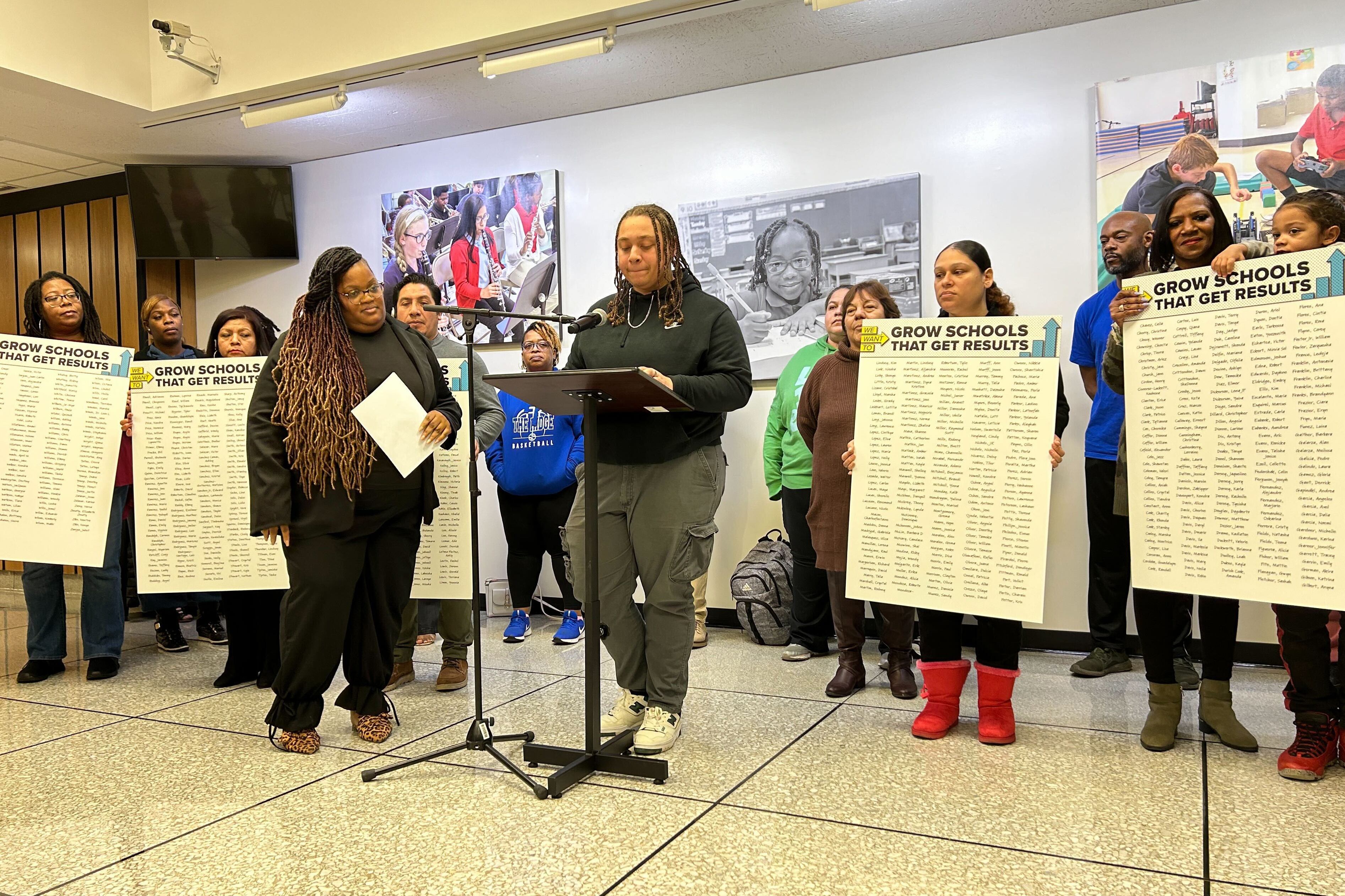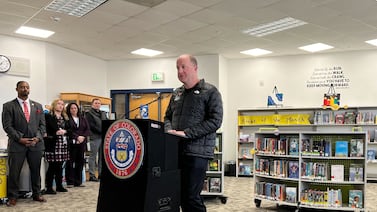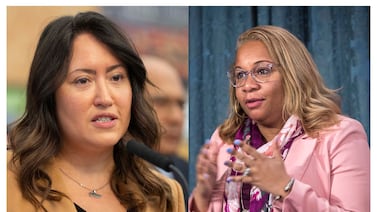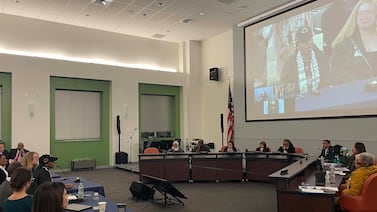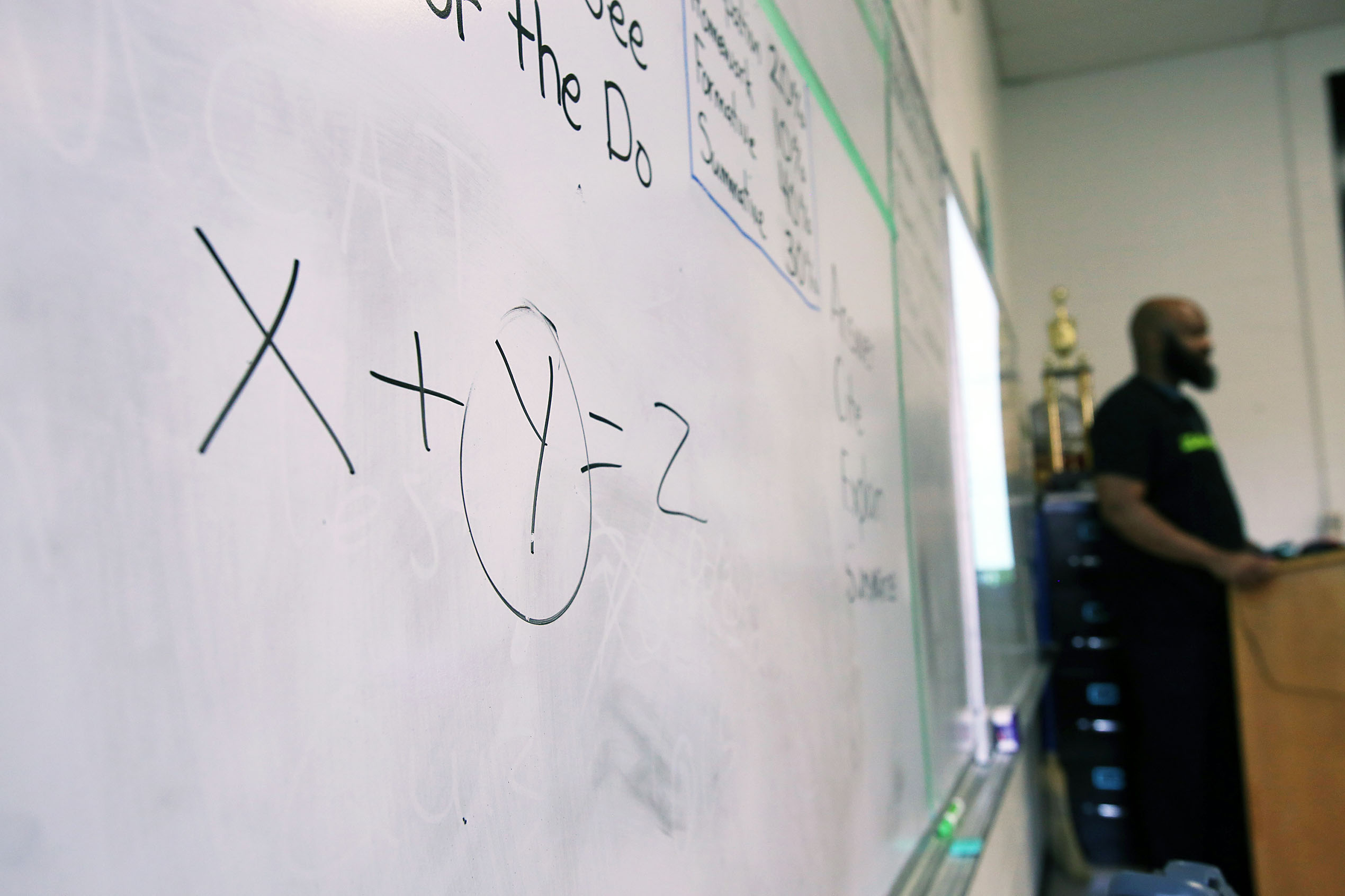Sign up for Chalkbeat Indiana’s free daily newsletter to keep up with Indianapolis Public Schools, Marion County’s township districts, and statewide education news.
Community members in a campaign organized by charter-friendly advocacy groups called on Indianapolis Public Schools to partner with more charter schools in a petition delivered to IPS school board members Wednesday.
Members of the “Better Together” campaign echoed demands long expressed during public comment at school board meetings: to partner with schools that post higher-than-average test scores for Black and Latino students. Specifically, community members point to charter schools excelling in this area.
The demand comes ahead of the district’s application window for schools interested in joining the Innovation Network, a string of autonomous schools that includes both charter and non-charter schools. But partnerships in IPS can also take other forms: charter schools have previously expressed interest in occupying a few of the six school buildings that the district closed earlier this year and proposed legislation at the Statehouse could impact how that’s done.
The petition of 1,000 residents is the latest development in an ongoing divide between IPS and the charter school community. Charter-supportive community members previously expressed opposition to the district’s Rebuilding Stronger overhaul plan in 2022, in part because it did not replicate charter schools best serving students of color. Now, the district could float an operating referendum to help fund the reorganization that will largely take effect next school year, and campaign members are asking again.
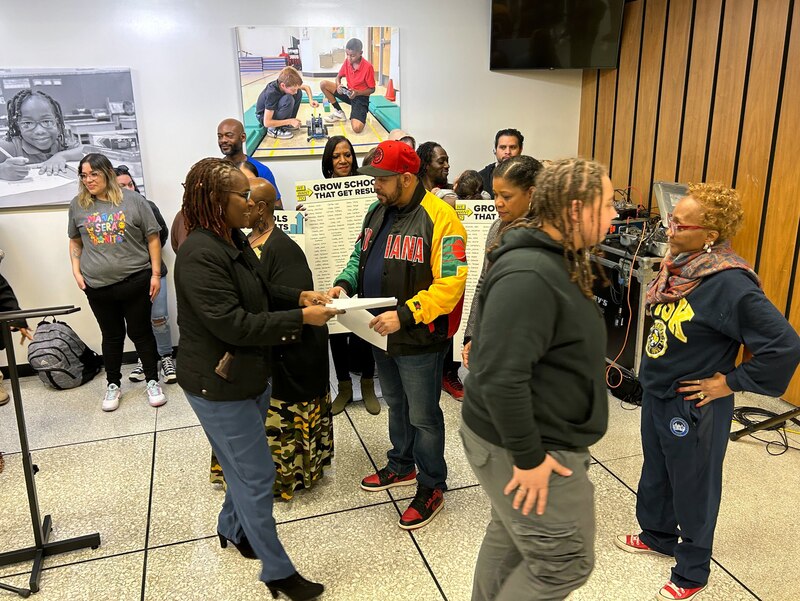
Parents pointed to the district’s analysis of 2023 ILEARN results that compared proficiency rates for both English and math in schools across Marion County. Three Paramount campuses that are independent charters not in the Innovation Network were in the top quartile of performance for Black and Latino students and students eligible for free or reduced lunch, along with the district’s Sidener Academy for High Ability Students.
And the three high schools in the top quartile for SAT performance benchmarks for both math and Evidence-Based Reading and Writing were all Innovation Network charter schools.
“We are asking to call on the IPS administration to have a detailed plan in place by June to grow public schools that are working,” said Gregory Henson, whose daughter attends Longfellow Middle School, a traditional IPS school. “And we’re asking that this plan be inclusive of public charter schools that were highlighted in the October board report on school performance in Indianapolis.”
The push is in partnership with Stand for Children Indiana and Empowered Families, two groups that are supportive of charter schools and their expansion.
In a statement, Superintendent Aleesia Johnson said she appreciated the perspectives brought forth by concerned parents and community members.
“Every family in Indianapolis wants great choices at great schools, and that is what our district has been wholly focused on since 2015 with our innovation network school partnerships, our emerging schools supports, and, next year, the full implementation of Rebuilding Stronger,” she said. “”Our North Star will continue to be keeping our commitment to great schools, in every neighborhood, for every student.”
Opportunity gaps in IPS higher than independent charters
In IPS, the gap in proficiency between white students and students of color is significant.
White students reached proficiency on the ILEARN in both English and math at a rate of 36.3%, compared to 5.4% for Black students and 8.3% for Latino students, according to state data.
“We should all be concerned when we see how much work there is to be done to recover from the negative impacts of the COVID-19 pandemic, particularly when a gap in both the resources and opportunities available to poor students and students of color existed pre-pandemic, and showed up in academic outcomes and results,” Johnson said in her statement.
As a whole, however, that gap is smaller in independent charters not affiliated with IPS, according to Chalkbeat’s latest analysis of ILEARN scores. Black and Hispanic students in these schools located in or near IPS borders posted higher proficiency rates as a whole.
Yet demographic differences also vary between IPS and charters within its borders. While both Innovation and independent charter schools within IPS borders have a higher proportion of Black students and students eligible for free or reduced lunch, IPS has a higher percentage of special education students and English language learners.
Elazia Davison, a student at the Believe Circle City High School independent charter school, said he has attended multiple IPS schools and seen some schools with clear models for learning while others have almost no stability or functional learning model.
“I want to make sure that students who come after me are positively impacted by the measures IPS takes to ensure equitable learning,” he said. “This will happen by replicating schools that show success.”
School board president Angelia Moore said the next steps would be continuing conversations.
“I appreciate and respect all parents’ input on what works for their children,” Moore said.
Amelia Pak-Harvey covers Indianapolis and Lawrence Township schools for Chalkbeat Indiana. Contact Amelia at apak-harvey@chalkbeat.org.

